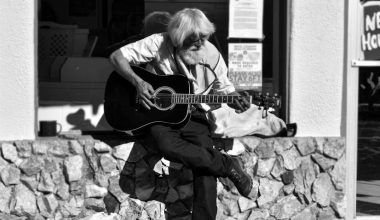Wave music, often referred to as an evolving genre in electronic musics, is all about creating an atmospheric and emotional soundscape. It blends deep, rich basslines, ambient textures, and experimental melodies that make listeners feel like they’re surfing through a sea of sound. Whether you’re chilling at home or seeking focus, wave music can immerse you in a world of tranquility and introspection.
The beauty of wave music lies in its versatility. It can evoke a range of emotions—from nostalgia to exhilaration—making it a favorite among music enthusiasts and creators alike.
The Origins of Wave Music
Wave music may sound new, but its roots stretch back to the early 2010s. It emerged as a subgenre of electronic music, blending elements of trap, hip-hop, and ambient soundscapes. Artists like Klimeks, Kareful, and Plastician are often credited with defining the wave sound. These pioneers created tracks that resonated deeply with fans, setting the stage for wave musics to become a global phenomenon.
Unlike mainstream genres, wave musics was nurtured in underground communities and online platforms. These virtual spaces allowed artists to experiment freely, giving wave musics its unique and ever-evolving character.
Why Wave Music is Gaining Popularity
In today’s fast-paced world, people are looking for music that helps them slow down and connect with their emotions. Wave musics provides exactly that. With its smooth transitions and immersive beats, it’s no surprise that wave musics is becoming a favorite for study sessions, late-night drives, and even meditation.
Additionally, the rise of streaming platforms like SoundCloud, Spotify, and YouTube has made wave musics more accessible. Artists can now share their creations with a global audience, leading to a surge in the genre’s popularity.
Key Elements of Wave Music
Wave music isn’t just a collection of sounds; it’s an experience. Here are some key elements that define this genre:
- Deep Basslines: The foundation of any good wave track.
- Ambient Textures: These create the dreamy, ethereal feel wave musics is known for.
- Trap Influence: A subtle nod to its electronic and hip-hop roots.
- Vocal Chops: Often used sparingly, adding a human touch to the otherwise instrumental genre.
Top Wave Music Artists to Follow
If you’re new to wave musics, here’s a list of artists you should explore:
- Klimeks: Known for creating atmospheric masterpieces.
- Kareful: A pioneer in bringing wave musics to mainstream attention.
- Pholo: Merges traditional wave sounds with modern electronic beats.
These artists represent the diversity within wave musics, showcasing its potential to grow and evolve.
How to Enjoy Wave Music
The best way to enjoy wave musics is to let it wash over you. Create a playlist and listen during quiet moments, or use it as background music for creative tasks. Here are some tips:
- Use quality headphones or speakers to appreciate the subtle details.
- Explore wave musics playlists on platforms like Spotify.
- Share your favorite tracks with friends to spread the vibe.
The Future of Wave Music
Wave music is here to stay. As more artists experiment with this genre, it’s bound to expand its horizons. With its ability to blend seamlessly into various moods and settings, wave musics is set to become a staple in playlists worldwide.
For further reading, explore these related articles:
For additional resources on music marketing and distribution, visit DMT Records Private Limited.






